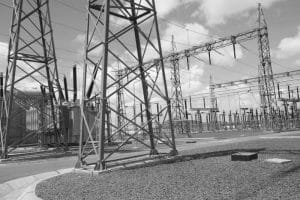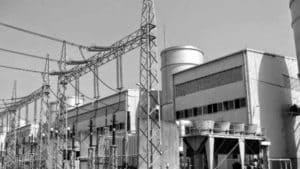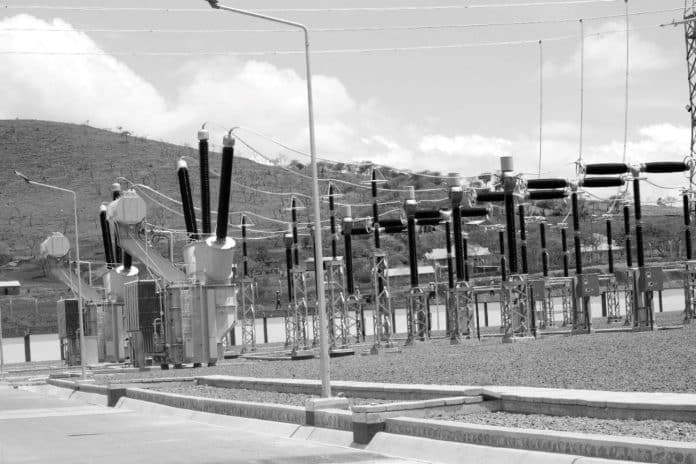Introduction to Arusha Thermal Power Station
Located in the heart of Tanzania’s northern safari circuit, the Arusha Thermal Power Station is a crucial component of the country’s energy infrastructure. As a major contributor to the region’s economic growth and development, this power plant plays a pivotal role in supporting the thriving tourism industry and powering the surrounding communities.
Commissioned in the early 2000s, the Arusha Thermal Power Station has since become a symbol of Tanzania’s commitment to reliable and sustainable energy solutions. Strategically positioned near the bustling city of Arusha, this state-of-the-art facility serves as a testament to the nation’s drive to meet the growing energy demands of its people and businesses.
History and Significance of Arusha Thermal Power Station
The Arusha Thermal Power Station was conceived as a part of Tanzania’s broader plan to diversify its energy mix and reduce its reliance on hydropower, which had been susceptible to fluctuations in rainfall and drought conditions. The decision to establish this power plant in Arusha was driven by the region’s burgeoning tourism industry and the need to ensure a reliable and consistent supply of electricity to support the influx of visitors.
Since its inception, the Arusha Thermal Power Station has played a pivotal role in powering the local economy, providing the necessary energy to fuel the hospitality industry, transportation networks, and a wide range of commercial and residential activities. The station’s strategic location has also made it a crucial asset in supporting the growth of Tanzania’s northern safari circuit, which attracts millions of tourists each year.
Power Generation Process at Arusha Thermal Power Station

The Arusha Thermal Power Station utilizes a combination of natural gas and diesel fuel to generate electricity through a highly efficient and environmentally-conscious process. The facility’s state-of-the-art turbines are designed to maximize energy output while minimizing emissions and waste, making it a model of sustainable power generation in the region.
The power generation process at the Arusha Thermal Power Station involves the following steps:
- Fuel Intake: Natural gas and diesel fuel are transported to the facility through dedicated pipelines and storage tanks, ensuring a reliable and continuous supply of energy sources.
- Combustion: The fuel is then fed into the station’s high-efficiency turbines, where it is burned to generate high-pressure steam.
- Electricity Generation: The steam-powered turbines drive generators that convert the mechanical energy into electrical energy, which is then stepped up and transmitted to the national grid.
- Waste Heat Utilization: The waste heat generated during the combustion process is captured and repurposed to power auxiliary systems, such as water treatment and cooling, further enhancing the plant’s overall efficiency.
- Emission Control: The Arusha Thermal Power Station employs advanced pollution control technologies, including flue gas scrubbers and particulate filters, to minimize the environmental impact of its operations.
Importance of Arusha Thermal Power Station for Tourism in Tanzania
The Arusha Thermal Power Station plays a crucial role in supporting Tanzania’s thriving tourism industry, particularly in the northern safari circuit. As a reliable and consistent source of electricity, the power station ensures that the region’s hotels, lodges, and tourist facilities can operate at optimal levels, providing visitors with a comfortable and enjoyable experience.
Moreover, the power station’s location near the city of Arusha, a major gateway for safari-goers, makes it a strategic asset in powering the transportation infrastructure, such as airports, roads, and vehicle charging stations. This, in turn, facilitates the seamless movement of tourists throughout the region, enhancing the overall tourism experience.
The Arusha Thermal Power Station also contributes to the development of ancillary industries that cater to the tourism sector, such as restaurants, shops, and entertainment venues. By providing a stable and abundant supply of electricity, the power station enables these businesses to thrive and meet the growing demands of the tourism industry.
Economic Impact of Arusha Thermal Power Station
The Arusha Thermal Power Station has had a profound impact on the local and regional economy, serving as a catalyst for growth and development. The station’s operations directly employ hundreds of skilled professionals, from engineers and technicians to administrative staff, providing stable and well-paying jobs to the surrounding communities.
Beyond direct employment, the power station’s economic influence extends to the wider supply chain, supporting numerous local businesses and service providers. From fuel suppliers and equipment manufacturers to catering and logistics companies, the Arusha Thermal Power Station has become a hub of economic activity, generating substantial revenue and fostering entrepreneurship.
The station’s reliable and affordable electricity has also been a key driver in attracting new investments and businesses to the region, further diversifying the local economy. This, in turn, has led to the creation of additional job opportunities and the expansion of the tax base, contributing to the overall prosperity of the Arusha area and the broader Tanzanian economy.
Environmental Considerations and Sustainability Measures

The Arusha Thermal Power Station is committed to operating in an environmentally responsible manner, with a strong focus on sustainability and minimizing its carbon footprint. The facility has implemented a range of measures to ensure its operations are in line with the country’s environmental regulations and international best practices.
One of the station’s key sustainability initiatives is its investment in state-of-the-art emission control technologies, including flue gas scrubbers and particulate filters. These systems effectively remove harmful pollutants from the plant’s exhaust, ensuring that the station’s environmental impact is kept to a minimum.
Additionally, the Arusha Thermal Power Station has taken steps to optimize its water usage and implement water recycling and treatment processes. This approach not only reduces the strain on local water resources but also contributes to the overall sustainability of the facility’s operations.
The power station also actively engages in various community-based environmental initiatives, such as tree-planting programs and awareness campaigns, demonstrating its commitment to fostering a sustainable future for the region.
Future Developments and Expansion Plans
The Arusha Thermal Power Station is poised for continued growth and expansion to meet the increasing energy demands of Tanzania’s rapidly developing economy and burgeoning tourism industry. The station’s management team has outlined a comprehensive plan to enhance the facility’s capacity and diversify its energy sources in the coming years.
One of the key initiatives is the integration of renewable energy technologies, such as solar and wind power, into the station’s energy mix. This will not only reduce the facility’s reliance on fossil fuels but also contribute to the country’s broader sustainability goals and position Tanzania as a leader in the adoption of clean energy solutions.
Additionally, the Arusha Thermal Power Station is exploring the feasibility of expanding its operations to include cogeneration capabilities, whereby the waste heat generated during the power generation process is captured and repurposed to provide heating and cooling for the surrounding communities. This innovative approach will further enhance the station’s overall efficiency and environmental performance.
Challenges and Solutions in Operating Arusha Thermal Power Station
Operating a large-scale power plant like the Arusha Thermal Power Station is not without its challenges, and the station’s management team has demonstrated a proactive and innovative approach to addressing these issues.
One of the primary challenges faced by the power station is the fluctuating demand for electricity, particularly during the peak tourism seasons and periods of economic growth. To address this, the station has implemented advanced load-balancing and demand-side management strategies, ensuring that the supply of electricity remains stable and responsive to the changing needs of the region.
Another challenge is the need to maintain a reliable and continuous supply of fuel, given the station’s reliance on natural gas and diesel. The management team has established robust procurement and logistics systems to mitigate the risk of fuel shortages, including the diversification of supply sources and the optimization of storage and distribution infrastructure.
Furthermore, the Arusha Thermal Power Station has had to navigate the complexities of environmental regulations and community engagement, ensuring that its operations are aligned with the best interests of the local population and the broader ecosystem. The station’s proactive approach to stakeholder communication, environmental impact assessments, and community development initiatives has been instrumental in addressing these challenges.
Community Engagement and Social Responsibility Initiatives
The Arusha Thermal Power Station recognizes the importance of its role in the local community and has made a concerted effort to engage with and support the surrounding neighborhoods. The station’s management team has implemented a range of social responsibility initiatives that aim to improve the quality of life for residents and contribute to the overall development of the region.
One of the station’s key initiatives is the provision of scholarships and educational support to local students, particularly those from underprivileged backgrounds. This investment in the community’s future leaders not only improves access to education but also fosters a sense of pride and ownership among the residents.
The power station has also been actively involved in various community development projects, such as the construction of healthcare facilities, the improvement of infrastructure, and the support of small-scale entrepreneurial ventures. These efforts have helped to strengthen the bond between the Arusha Thermal Power Station and the local community, positioning the facility as a trusted and valuable partner in the region’s growth and prosperity.
Moreover, the station has implemented robust employee engagement and welfare programs, ensuring that its workforce is well-supported and empowered to contribute to the station’s success. This focus on employee well-being has not only improved morale and productivity but also reinforced the station’s reputation as a responsible and caring employer within the local community.
Conclusion: Arusha Thermal Power Station as a Catalyst for Growth in Tanzania
The Arusha Thermal Power Station stands as a shining example of how strategic energy infrastructure can serve as a catalyst for economic growth, community development, and environmental sustainability. By providing reliable and affordable electricity to the region, the power station has played a pivotal role in supporting Tanzania’s thriving tourism industry and fueling the broader economic transformation of the country.
If you’re interested in learning more about the Arusha Thermal Power Station and how it is contributing to Tanzania’s development, we encourage you to visit the station’s website or contact their community engagement team. They would be happy to provide you with additional information and explore opportunities for collaboration or investment in this exciting project.
As Tanzania continues to chart a course towards a more prosperous and sustainable future, the Arusha Thermal Power Station will undoubtedly remain a cornerstone of the nation’s energy infrastructure, powering the dreams and aspirations of its people for generations to come.
For more articles related to Energy in Tanzania click here!































